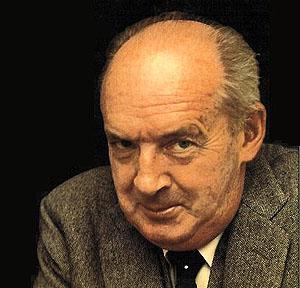Publishing
Creating books is a craft Patrick Boyer acquired as a fourth-generation type-setter, printer, and publisher in the Boyer family at Bracebridge, Ontario. He has worked with a number of publishers, helping others get their works into print. Those who published his own books include University of Toronto Press, Butterworths, Carswells, Stoddart, and Dundurn. In 2008 he established the publishing house Blue Butterfly Books, which published a number of important works, both fiction and non-fiction. Blue Butterfly eventually consolidated most operations with those of Dundurn Books. At intervals since the 1970s he has also published books through Canadian Shield Communications Corporation, a company of which he is president. Canadian Shield retains the “Blue Butterfly” logo and imprint for certain titles, and employs its “Muskoka Books” imprint for works about Muskokans and Muskoka District.
For more, visit www.muskokabooks.ca
 Blue Butterflies and Literary Journeys
Blue Butterflies and Literary Journeys
When Patrick Boyer launched Blue Butterfly Books in 2008, the publishing house featured a blue butterfly logo and “Think Free . . . Be Free!” as its credo.
Butterflies are remarkable creatures, delicate yet strong, lazy flutterers capable of migrating thousands of miles each year, known world-wide in a dizzying array of sizes and colourations. The same can be said of books.
Blue butterflies are special. In the “eidetic perception” correlations established by Heinrich Evering during research in Toronto during the 1960s and 1970s on “non-verbal communication” through colours, shapes, and designs, blue conveys balance and harmony.
In addition, the life and researches of Vladimir Nabokov epitomize a fascinating connection between blue butterflies and literature.
 Nabokov dazzled and provoked readers through exquisite imagery and the psychological realism of his characters. With equal talent as curator of lepidoptery, he ran Harvard University’s butterfly collecting and classification program at the Museum of Comparative Zoology during the 1940s. In 1944 Nabokov first identified the “Karner blue” butterfly in Karner, New York, a subspecies of the more common Melissa blue.
Nabokov dazzled and provoked readers through exquisite imagery and the psychological realism of his characters. With equal talent as curator of lepidoptery, he ran Harvard University’s butterfly collecting and classification program at the Museum of Comparative Zoology during the 1940s. In 1944 Nabokov first identified the “Karner blue” butterfly in Karner, New York, a subspecies of the more common Melissa blue.
So great were Vladimir Nabokov’s contributions in his exacting work that produced astonishing breakthroughs in blue butterfly research, that a species was named to honor him. The “Nabokovia” is, fittingly, a species in the genus Polyommatinae, the “blues” subfamily of gossamer-winged butterflies. A Nabokovia’s wing span is about an inch long. Sandy pine prairies, barrens, and lakeshore dunes are their natural habitat. Adult Nabokovias live on nectar; the larvae, on wild lupine leaves.
Paleontologist and essayist Stephen Jay Gould has explained that Nabokov never accepted how genetics or the counting of chromosomes was a valid way to distinguish species of insects, and how he relied instead on the traditional lepidopterists’ method of microscopic comparison of their genitalia. The Harvard Museum of Natural History still possesses Nabokov’s “genitalia cabinet” where the author stored his collection of male blue butterfly genitalia. “Nabokov was a serious taxonomist,” said Museum staff writer Nancy Pick. “He did quite a good job distinguishing species that you would not think were different – by looking at their genitalia under a microscope six hours a day, seven days a week, until his eyesight was permanently impaired.”
Many Nabokov fans try to ascribe literary value to his scientific papers, as Gould noted, while others claim the renowned author’s scientific work enriched his literary output. However, rather than assuming either side of Nabokov’s work caused or stimulated the other, a more profound third view suggests both stemmed from Nabokov’s love of detail, contemplation, and symmetry. Such holistic understanding of his human capacity better explains Nabokov’s equally intense dedication to developing complex chess problems.
“Few symbols express the literary experience more exquisitely than a blue butterfly,” said Patrick Boyer when inaugurating Blue Butterfly Books. “Like Vladimir Nabokov’s own writing, this creature of beauty and freedom takes flight and the journey carries us through the intersection of reality and human imagination.”
His publishing house proudly accounted for many pioneering works of fiction and non-fiction by a diverse range of talented writers, both first-time and well-established Canadian authors. By 2011 Blue Butterfly Book Publishing Inc. had grown too big to remain small, yet was too small to function as a major publisher, so on June 1 that year its operations were consolidated with those of Toronto-based Dundurn Books, one of Canada’s largest independent publishers. The name “Blue Butterfly Books” remains an imprint of Canadian Shield Communications Corporation for occasional titles.
Copyright © 2023 || Website Development by E-griculture.com




































